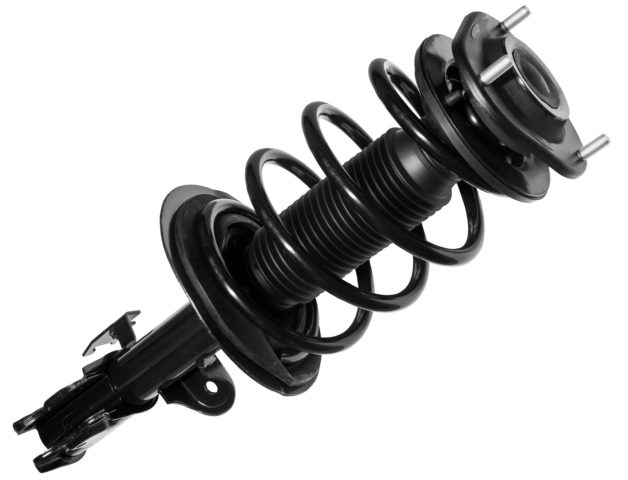Replacing worn ride control components is often a significant revenue source for the independent service industry, given that most vehicles require shock/strut replacement after their OE warranties have expired. However, it’s a complex repair, requiring specialized knowledge and equipment, especially for vehicles equipped with electronic safety systems. Until the advent of complete ride control assemblies, this put the job out of reach of some technicians and even some service facilities.
Complete assemblies have changed all that, vastly simplifying the process and even improving safety for installers. But it’s not a complete solution. We talked with Joseph Bacarella, customer service manager, Gurus On-Call, DriV Inc., manufacturer of Monroe shock absorbers and struts and Monroe Quick-Strut assemblies, and Aaron Shaffer, director of product and marketing with KYB Industries, for their insights on how this technological advance affects the shock and strut market today. Here’s part of what they had to say.
How has the advent of the ride control assembly option changed the way independent automotive service facilities recommend ride control service?
JB: The introduction of Monroe Quick-Strut assemblies in 2003 helped revolutionize the ride control aftermarket by dramatically reducing the time needed to perform a complete, high-quality strut replacement. In some cases, repair providers previously might have shied away from recommending certain strut replacement opportunities because those repairs could tie up their bays for multiple hours.
Quick-Strut assemblies aren’t simply a time-saving solution, however. They are safer for the service provider since assemblies do not require removal and reassembly of the compressed spring. This also reduces the risk of damaging the spring and eliminates the need for specialized tools. In addition, the use of quality assemblies helps the service provider restore the original equipment-style ride and handling preferred by many vehicle owners.
AS: I don’t know if it has changed how they recommend it, but it’s brought smaller shops or shops without the spring compressor equipment to start offering this service, or allowed every technician to perform the service, rather than just the more experienced techs.
[However,] it’s gotten so many people used to replacing with full assembly options that if it’s not available, they might turn the business away rather than doing what’s best for the customer. And there are just some cars that will never have full assemblies available, and that’s as it should be, since it doesn’t make sense for every vehicle. So for the future the individual components will still be there.
How has it changed the financial/profit picture for shops?
JB: Ride control service can and should be an important contributor to a shop’s bottom line. Strut assemblies can help service providers perform more of these repairs in less time, while maintaining high quality standards and reducing comebacks.
AS: It’s allowed more shops to get into the game. But coversely, more DIYers. There’s a segment of the population that would never attempt to install struts (for one thing, you need a spring compressor), but they might be able to install an assembly.
What can shops do to ensure they are maximizing their service quality for their customers, as well as ensuring their bottom-line benefits appropriately?
JB: As with any fast-growing product category, there are often multiple choices of strut assemblies available for a given vehicle. These choices can vary dramatically in terms of quality, durability and performance. Given the fact that strut replacement is a comparatively high-ticket job that the customer might authorize only once over the life of their vehicle, it’s crucial that the shop use quality assemblies from a manufacturer they know and trust.
AS: It starts with having a goal, for both the shop and the customer. For example, we want to keep every vehicle operating as the manufacturer intended – or to last 250,000 to 300,000 kilometres. Once you have that goal, approaching the road test and the dialogue with the customer is different. If you don’t have that goal, you’re just fixing broken things.
Define what’s normal and what isn’t, and make the customer understand that shocks and struts affect the steering, brakes, tire control and vehicle control. Once you understand and believe that, you can start recommending shock and strut service more often and with greater confidence. And the end result is a better maintained vehicle the customer will like better and keep longer – which is, of course, in the interest of the independent service provider.


0 Comments